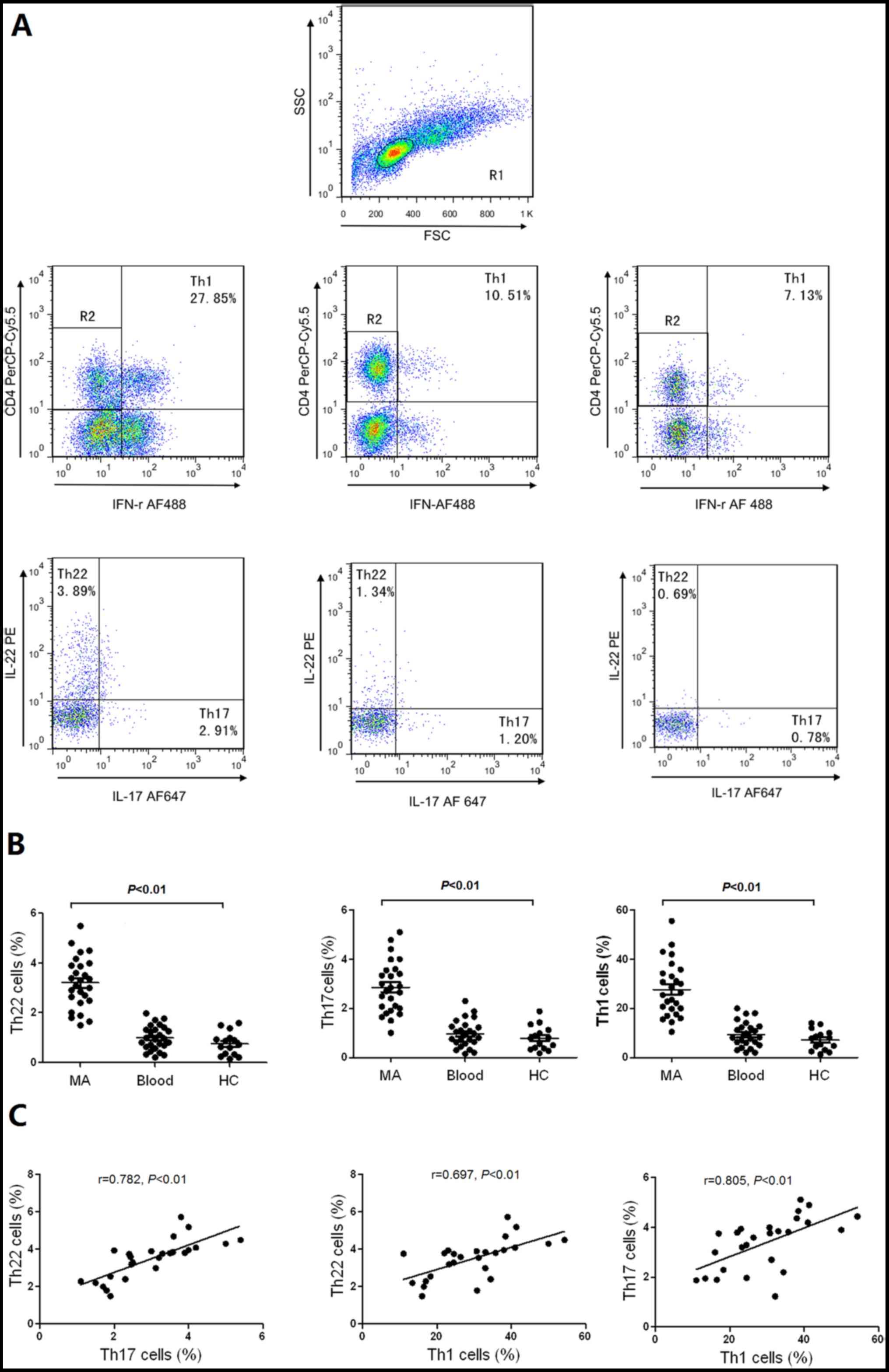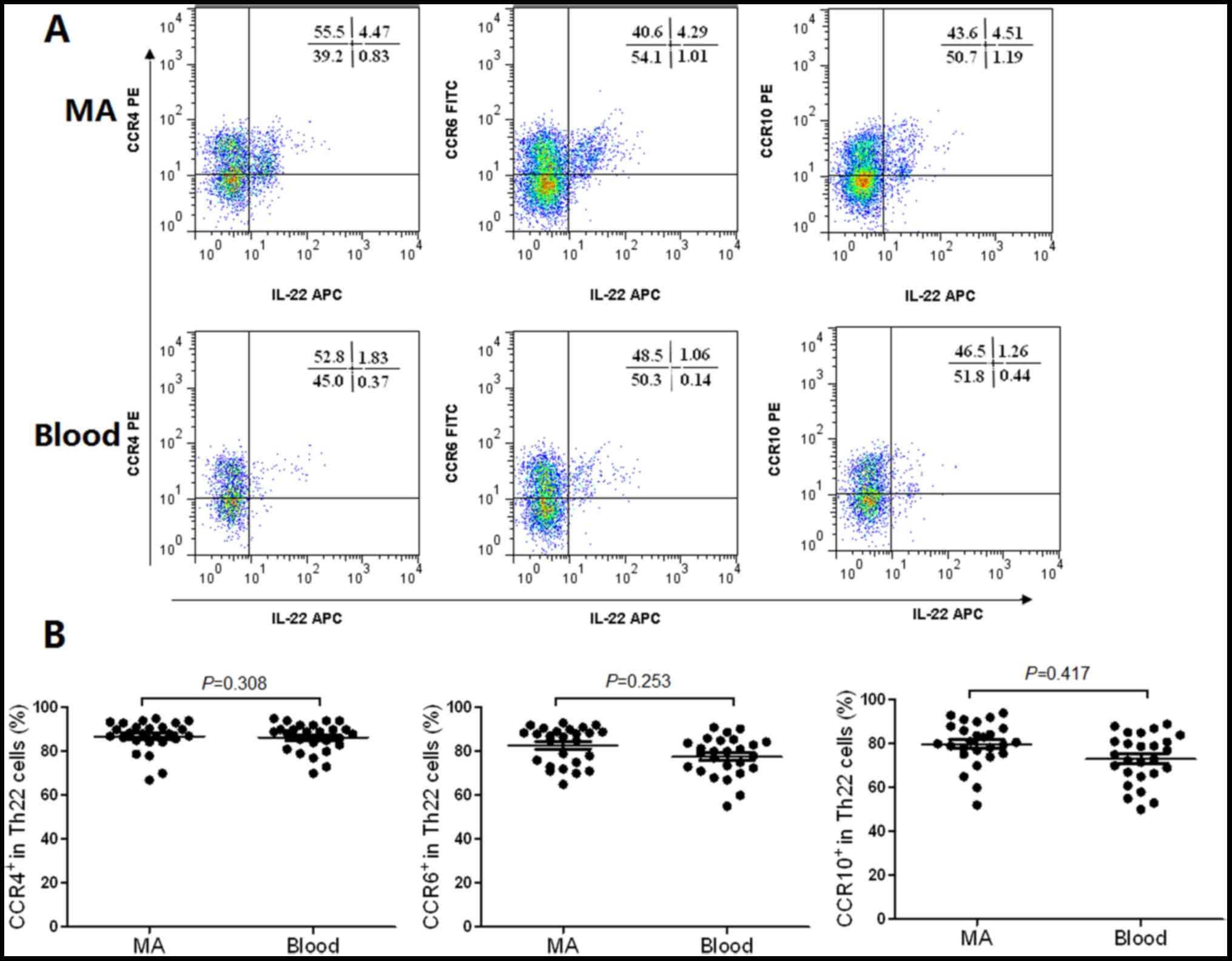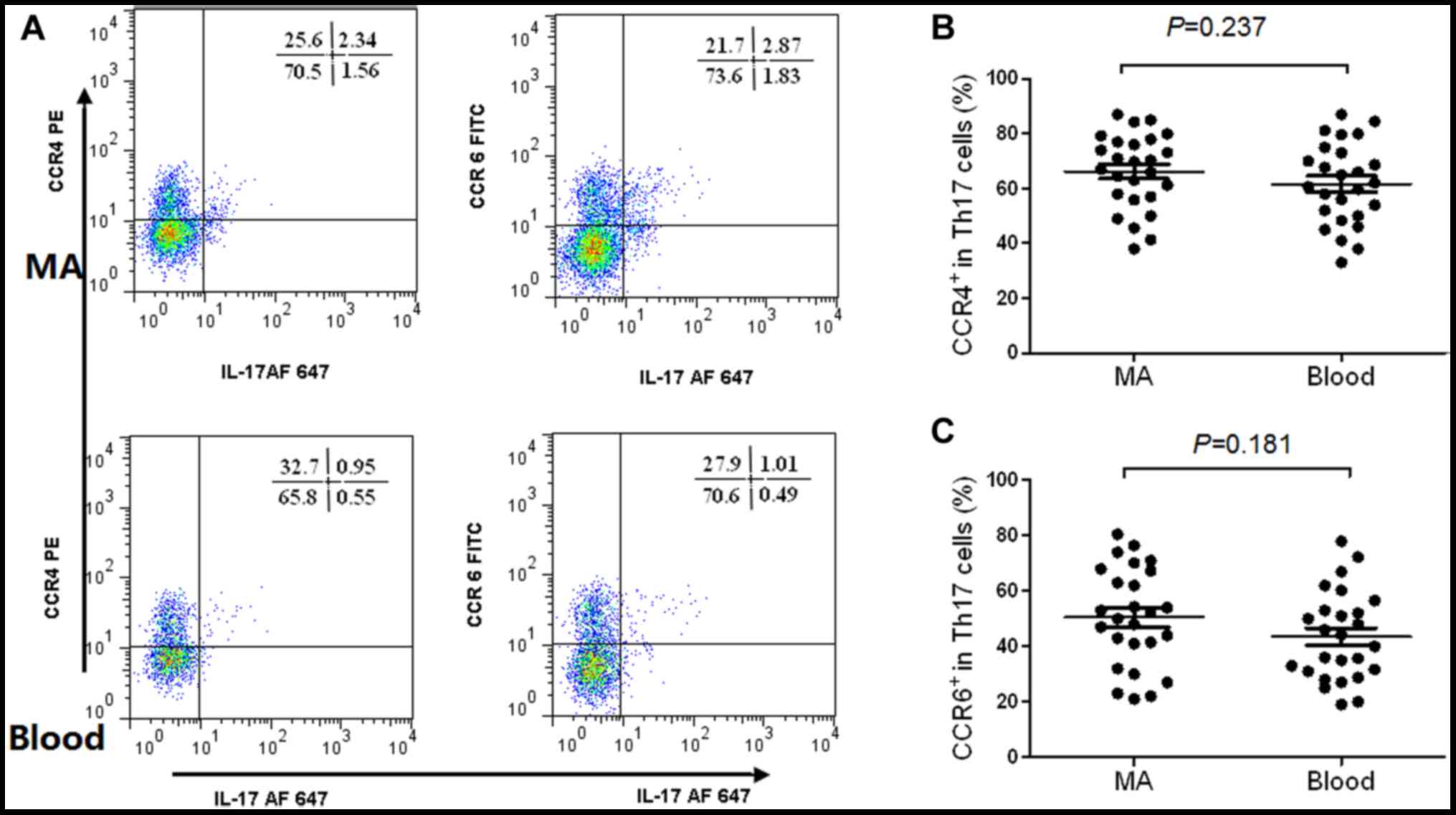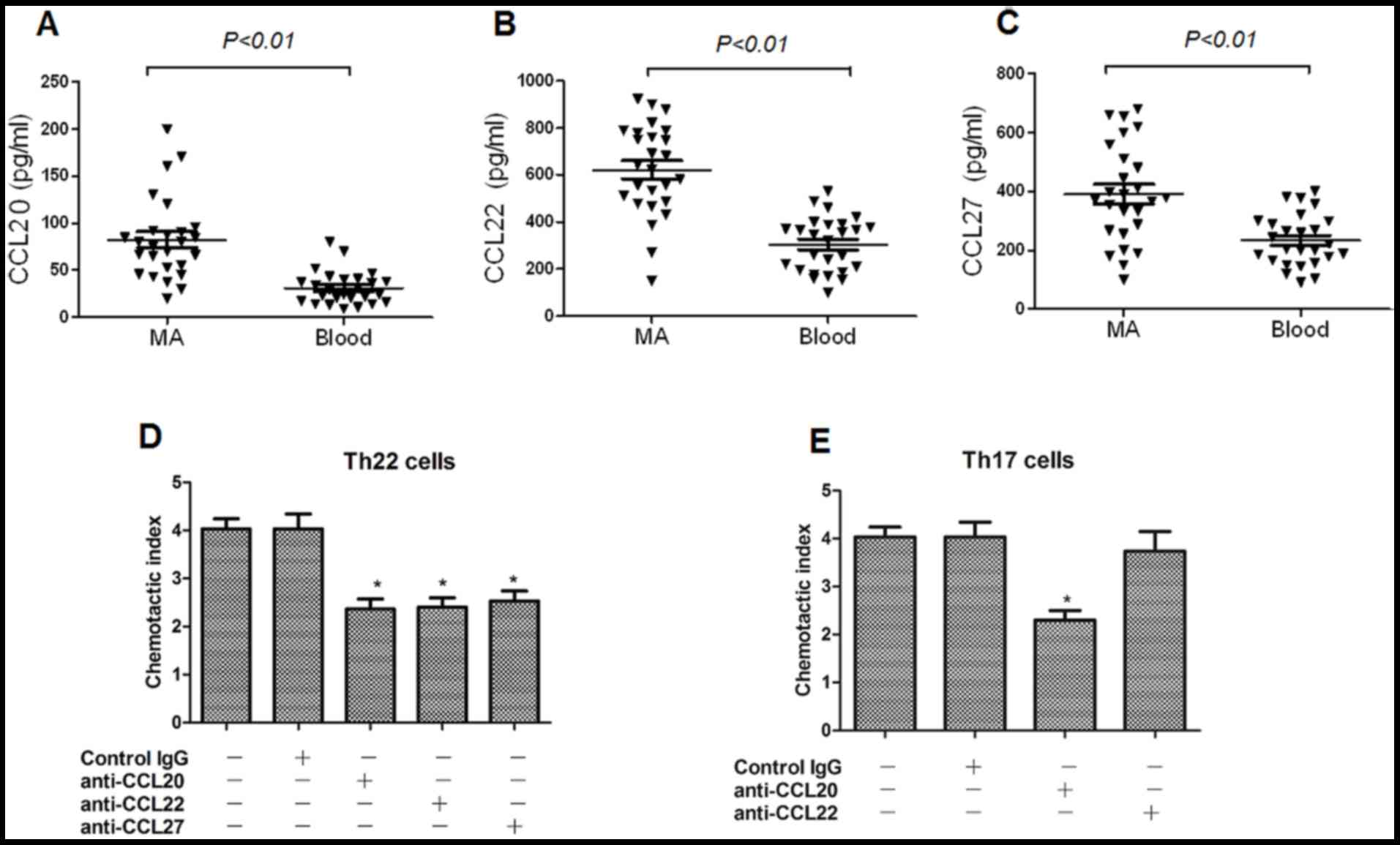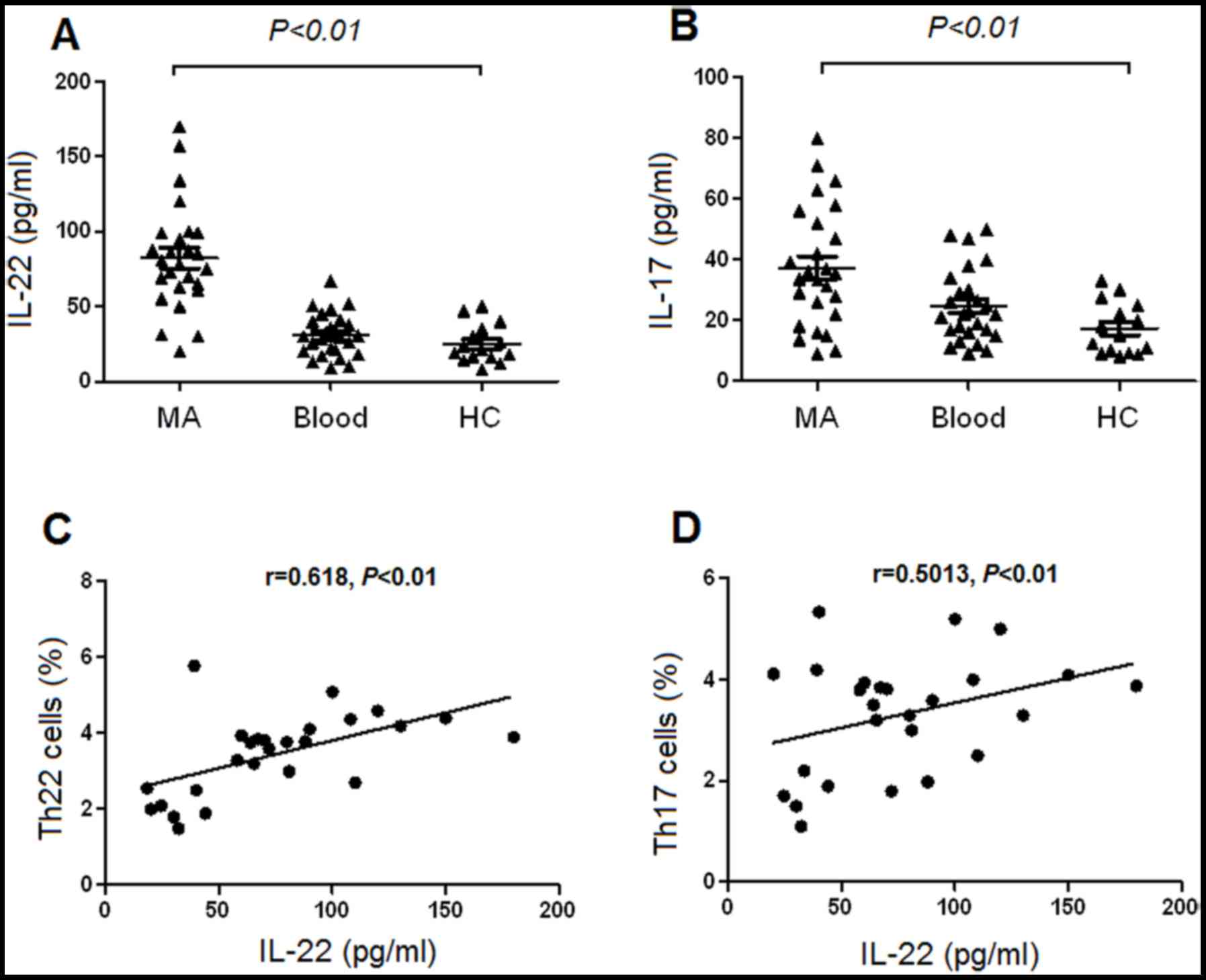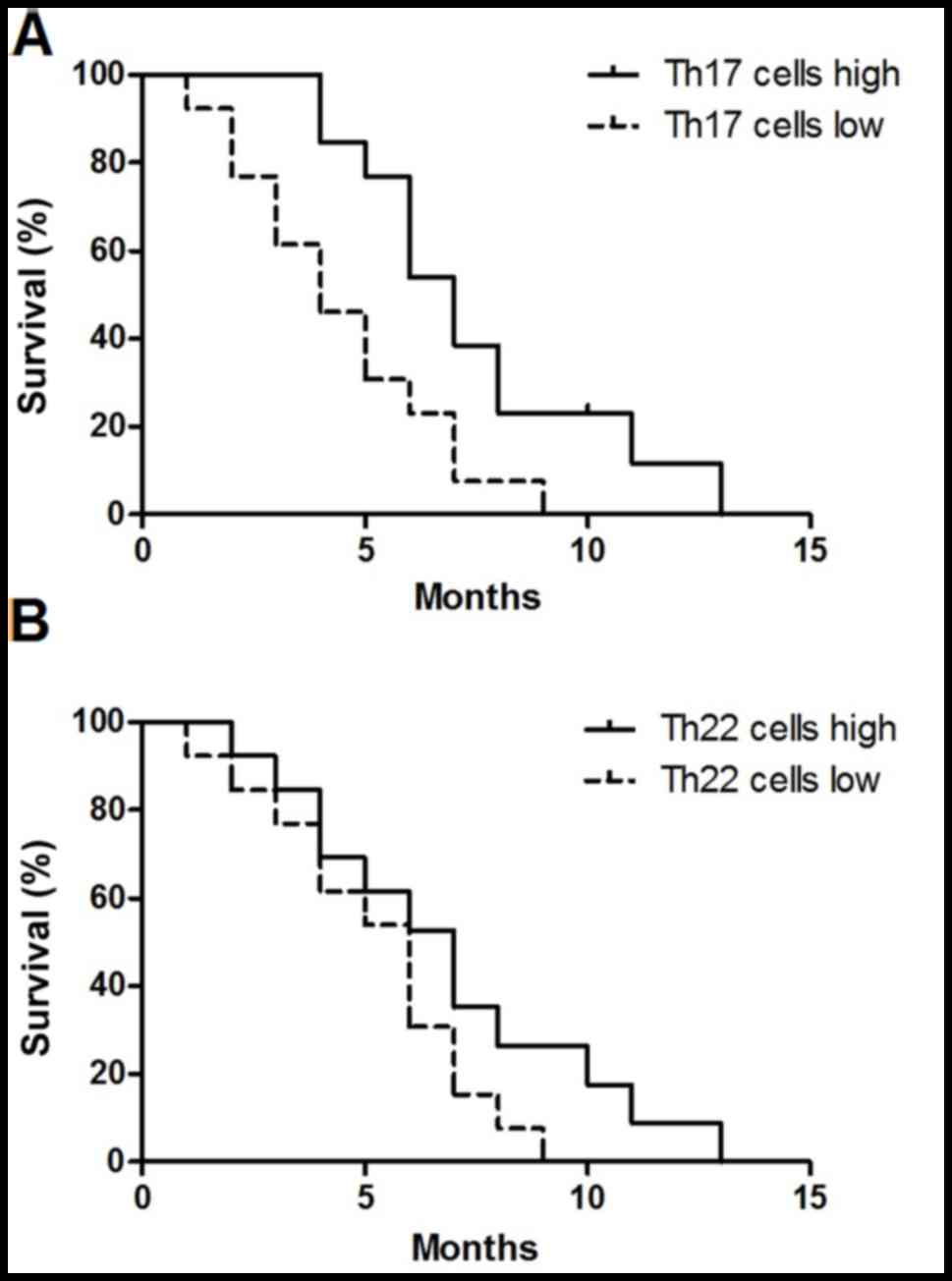|
1
|
Smith EM and Jayson GC: The current and
future management of malignant ascites. Clin Oncol (R Coll Radiol).
15:59–72. 2003. View Article : Google Scholar : PubMed/NCBI
|
|
2
|
Adam RA and Adam YG: Malignant ascites:
Past, present, and future. J Am Coll Surg. 198:999–1011. 2004.
View Article : Google Scholar : PubMed/NCBI
|
|
3
|
Hao C, Shi Y, Yu J, Wei X, Li S and Tong
Z: The therapeutic function of the chemokine RANTES on the H22
hepatoma ascites model. Mol Cell Biochem. 367:93–102. 2012.
View Article : Google Scholar : PubMed/NCBI
|
|
4
|
Zhang N, Pan HF and Ye DQ: Th22 in
inflammatory and autoimmune disease: Prospects for therapeutic
intervention. Mol Cell Biochem. 353:41–46. 2011. View Article : Google Scholar : PubMed/NCBI
|
|
5
|
Eyerich K, Pennino D, Scarponi C, Foerster
S, Nasorri F, Behrendt H, Ring J, Traidl-Hoffmann C, Albanesi C and
Cavani A: IL-17 in atopic eczema: Linking allergen-specific
adaptive and microbial-triggered innate immune response. J Allergy
Clin Immunol. 123:59–66.e4. 2009. View Article : Google Scholar : PubMed/NCBI
|
|
6
|
Dumoutier L, Louahed J and Renauld JC:
Cloning and characterization of IL-10-related T cell-derived
inducible factor (IL-TIF), a novel cytokine structurally related to
IL-10 and inducible by IL-9. J Immunol. 164:1814–1819. 2000.
View Article : Google Scholar : PubMed/NCBI
|
|
7
|
Qin S, Ma S, Huang X, Lu D, Zhou Y and
Jiang H: Th22 cells are associated with hepatocellular carcinoma
development and progression. Chin J Cancer Res. 26:135–141.
2014.PubMed/NCBI
|
|
8
|
Zhang W, Chen Y, Wei H, Zheng C, Sun R,
Zhang J and Tian Z: Antiapoptotic activity of autocrine
interleukin-22 and therapeutic effects of interleukin-22-small
interfering RNA on human lung cancer xenografts. Clin Cancer Res.
14:6432–6439. 2008. View Article : Google Scholar : PubMed/NCBI
|
|
9
|
Bettelli E, Korn T, Oukka M and Kuchroo
VK: Induction and effector functions of T(H)17 cells. Nature.
453:1051–1057. 2008. View Article : Google Scholar : PubMed/NCBI
|
|
10
|
Bettelli E, Korn T and Kuchroo VK: Th17:
The third member of the effector T cell trilogy. Curr Opin Immunol.
19:652–657. 2007. View Article : Google Scholar : PubMed/NCBI
|
|
11
|
Guéry L and Hugues S: Th17 cell plasticity
and functions in cancer immunity. Biomed Res Int. 2015:3146202015.
View Article : Google Scholar : PubMed/NCBI
|
|
12
|
Ye ZJ, Zhou Q, Gu YY, Qin SM, Ma WL, Xin
JB, Tao XN and Shi HZ: Generation and differentiation of
IL-17-producing CD4+ T cells in malignant pleural effusion. J
Immunol. 185:6348–6354. 2010. View Article : Google Scholar : PubMed/NCBI
|
|
13
|
Ye ZJ, Zhou Q, Yuan ML, Du RH, Yang WB,
Xiong XZ, Huang B and Shi HZ: Differentiation and recruitment of
IL-22-producing helper T cells stimulated by pleural mesothelial
cells in tuberculous pleurisy. Am J Respir Crit Care Med.
185:660–669. 2012. View Article : Google Scholar : PubMed/NCBI
|
|
14
|
Kebir H, Kreymborg K, Ifergan I,
Dodelet-Devillers A, Cayrol R, Bernard M, Giuliani F, Arbour N,
Becher B and Prat A: Human TH17 lymphocytes promote blood-brain
barrier disruption and central nervous system inflammation. Nat
Med. 13:1173–1175. 2007. View
Article : Google Scholar : PubMed/NCBI
|
|
15
|
You QH, Sun GY, Wang N, Shen JL and Wang
Y: Interleukin-17F-induced pulmonary microvascular endothelial
monolayer hyperpermeability via the protein kinase C pathway. J
Surg Res. 162:110–121. 2010. View Article : Google Scholar : PubMed/NCBI
|
|
16
|
Liang SC, Tan XY, Luxenberg DP, Karim R,
Dunussi-Joannopoulos K, Collins M and Fouser LA: Interleukin
(IL)-22 and IL-17 are coexpressed by Th17 cells and cooperatively
enhance expression of antimicrobial peptides. J Exp Med.
203:2271–2279. 2006. View Article : Google Scholar : PubMed/NCBI
|
|
17
|
Volpe E, Touzot M, Servant N,
Marloie-Provost MA, Hupé P, Barillot E and Soumelis V:
Multiparametric analysis of cytokine-driven human Th17
differentiation reveals a differential regulation of IL-17 and
IL-22 production. Blood. 114:3610–3614. 2009. View Article : Google Scholar : PubMed/NCBI
|
|
18
|
Ye ZJ, Xu LL, Zhou Q, Cui A, Wang XJ, Zhai
K, Wang Z, Tong ZH and Shi HZ: Recruitment of IL-27-producing
CD4(+) T cells and effect of IL-27 on pleural mesothelial cells in
tuberculous pleurisy. Lung. 193:539–548. 2015. View Article : Google Scholar : PubMed/NCBI
|
|
19
|
Trifari S, Kaplan CD, Tran EH, Crellin NK
and Spits H: Identification of a human helper T cell population
that has abundant production of interleukin 22 and is distinct from
T(H)-17, T(H)1 and T(H)2 cells. Nat Immunol. 10:864–871. 2009.
View Article : Google Scholar : PubMed/NCBI
|
|
20
|
Duhen T, Geiger R, Jarrossay D,
Lanzavecchia A and Sallusto F: Production of interleukin 22 but not
interleukin 17 by a subset of human skin-homing memory T cells. Nat
Immunol. 10:857–863. 2009. View
Article : Google Scholar : PubMed/NCBI
|
|
21
|
Zheng Y, Danilenko DM, Valdez P, Kasman I,
Eastham-Anderson J, Wu J and Ouyang W: Interleukin-22, a T(H)17
cytokine, mediates IL-23-induced dermal inflammation and
acanthosis. Nature. 445:648–651. 2007. View Article : Google Scholar : PubMed/NCBI
|
|
22
|
Nishihara M, Ogura H, Ueda N, Tsuruoka M,
Kitabayashi C, Tsuji F, Aono H, Ishihara K, Huseby E, Betz UA, et
al: IL-6-gp130-STAT3 in T cells directs the development of IL-17+
Th with a minimum effect on that of Treg in the steady state. Int
Immunol. 19:695–702. 2007. View Article : Google Scholar : PubMed/NCBI
|
|
23
|
Moser B and Loetscher P: Lymphocyte
traffic control by chemokines. Nat Immunol. 2:123–128. 2001.
View Article : Google Scholar : PubMed/NCBI
|
|
24
|
Xiao C, Zhou Q, Li X, Li H, Meng T, Zhong
Y, Pu J, Zhu M, Xu Y, Gan L, et al: Differentiation and recruitment
of IL-22-producing helper T cells in lgA nephropathy. Am J Transl
Res. 8:3872–3882. 2016.PubMed/NCBI
|
|
25
|
Bu XN, Zhou Q, Zhang JC, Ye ZJ, Tong ZH
and Shi HZ: Recruitment and phenotypic characteristics of
interleukin 9-producing CD4+ T cells in malignant pleural effusion.
Lung. 191:385–389. 2013. View Article : Google Scholar : PubMed/NCBI
|
|
26
|
Liao R, Sun J, Wu H, Yi Y, Wang JX, He HW,
Cai XY, Zhou J, Cheng YF, Fan J and Qiu SJ: High expression of
IL-17 and IL-17RE associate with poor prognosis of hepatocellular
carcinoma. J Exp Clin Cancer Res. 32:32013. View Article : Google Scholar : PubMed/NCBI
|
|
27
|
Punt S, Langenhoff JM, Putter H, Fleuren
GJ, Gorter A and Jordanova ES: The correlations between IL-17 vs.
Th17 cells and cancer patient survival: A systematic review.
Oncoimmunology. 4:e9845472015. View Article : Google Scholar : PubMed/NCBI
|
|
28
|
Martin-Orozco N, Muranski P, Chung Y, Yang
XO, Yamazaki T, Lu S, Hwu P, Restifo NP, Overwijk WW and Dong C: T
helper 17 cells promote cytotoxic T cell activation in tumor
immunity. Immunity. 31:787–798. 2009. View Article : Google Scholar : PubMed/NCBI
|
|
29
|
Kryczek I, Banerjee M, Cheng P, Vatan L,
Szeliga W, Wei S, Huang E, Finlayson E, Simeone D, Welling TH, et
al: Phenotype, distribution, generation, and functional and
clinical relevance of Th17 cells in the human tumor environments.
Blood. 114:1141–1149. 2009. View Article : Google Scholar : PubMed/NCBI
|
|
30
|
Jia L and Wu C: The biology and functions
of Th22 cells. Adv Exp Med Biol. 841:209–230. 2014. View Article : Google Scholar : PubMed/NCBI
|
|
31
|
Niccolai E, Taddei A, Ricci F, Rolla S,
D'Elios MM, Benagiano M, Bechi P, Bencini L, Ringressi MN, Pini A,
et al: Intra-tumoral IFN-γ-producing Th22 cells correlate with TNM
staging and the worst outcomes in pancreatic cancer. Clin Sci
(Lond). 130:247–258. 2016. View Article : Google Scholar : PubMed/NCBI
|
|
32
|
Di Lullo G, Marcatti M, Heltai S, Brunetto
E, Tresoldi C, Bondanza A, Bonini C, Ponzoni M, Tonon G, Ciceri F,
et al: Th22 cells increase in poor prognosis multiple myeloma and
promote tumor cell growth and survival. Oncoimmunology.
4:e10054602015. View Article : Google Scholar : PubMed/NCBI
|
|
33
|
Huang YH, Cao YF, Jiang ZY, Zhang S and
Gao F: Th22 cell accumulation is associated with colorectal cancer
development. World J Gastroenterol. 21:4216–4224. 2015. View Article : Google Scholar : PubMed/NCBI
|
|
34
|
Ling L, Zhao P, Yan G, Chen M, Zhang T,
Wang L and Jiang Y: The frequency of Th17 and Th22 cells in
patients with colorectal cancer at pre-operation and
post-operation. Immunol Invest. 44:56–69. 2015. View Article : Google Scholar : PubMed/NCBI
|



